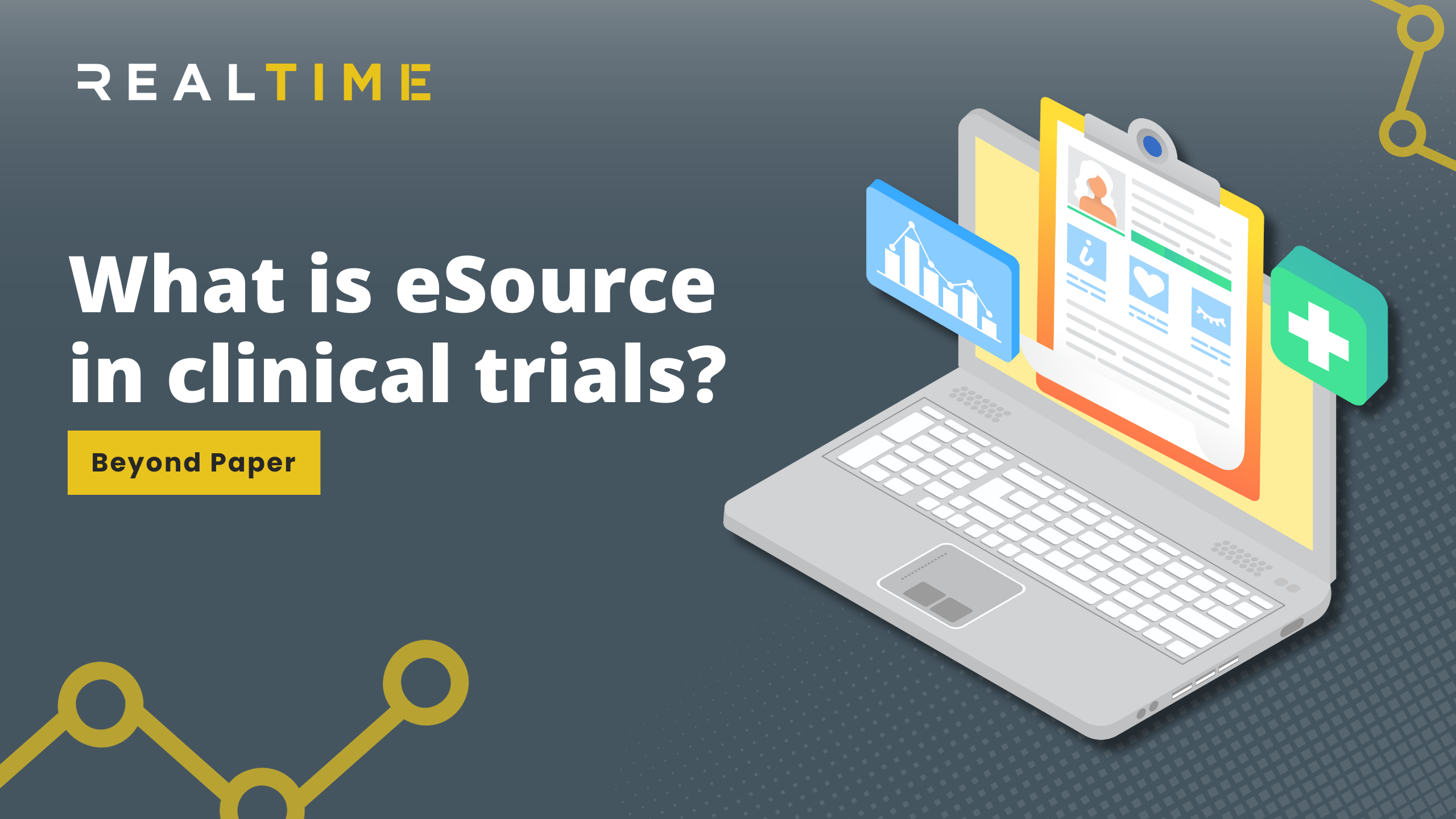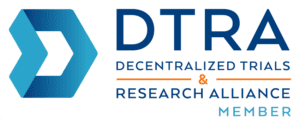Technological advancements and adoption in clinical trials continue to reshape the way data is collected, managed, and analyzed by clinical research sites, sponsors and CROs. Over the last decade, Electronic Source (eSource) has gained prominence for enabling direct data entry by investigators, reducing transcription errors and enhancing data quality.
eSource in clinical trials is often misunderstood. In this blog, we will explain the definition, applications and benefits of eSource for clinical research sites, sponsors and CROs. We’ll demystify the concept and significance of eSource in clinical trials and highlight the best practices for adoption.
What is eSource? A Paradigm Shift in Data Capture
In clinical trials, ‘source data’ refers to the first instance where trial data is recorded. These are the initial observations or findings recorded during a clinical trial. This data can come from a variety of sources, such as:
- Medical records (both electronic and paper-based)
- Laboratory reports
- Imaging data
- Patient diaries or questionnaires
- Electronic health records (EHRs)
- Data from medical devices
The traditional method of data collection involves recording data on paper, which is then transcribed into an electronic data capture (EDC) system. However, eSource represents a departure from traditional paper-based methods in clinical trials. It involves the direct electronic capture of data from the source – be it the patient, clinical site, or laboratory – eliminating the need for paper records and offering a more streamlined, efficient, and accurate approach to data management.
What’s the difference between eSource and EDC?
eSource and Electronic Data Capture (EDC) serve distinct purposes and cater to different aspects of the clinical trial process. eSource is primarily used by clinical research sites to collect and store data directly from patients or healthcare providers in a digital format. This method replaces paper records to improve data accuracy and streamline data management at the site level. eSource systems ensure that the data entered is original, attributable, and traceable, simplifying the process of maintaining and updating patient records.
On the other hand, EDC systems are predominantly employed by trial sponsors or CROs (Contract Research Organizations). They are used for the collection, storage, and management of trial data across multiple sites. EDC systems are designed to aggregate data from various sources, including eSource, to ensure consistency and facilitate regulatory compliance.
While eSource focuses on the initial data capture at the point of contact with trial participants, EDC is more concerned with the broader aggregation, management, and analysis of trial data, confirming its integrity and suitability for regulatory submissions and decision-making processes.
The FDA's Perspective
The FDA is a proponent of advancing technology in clinical research and acknowledges the significance of eSource in ensuring data integrity and streamlining the clinical trial process. According to the FDA’s guidance on Electronic Source Data in Clinical Investigations, the agency recognizes the benefits of using electronic systems to capture, review, manage, and archive clinical trial data. Additionally, compliance with regulations like 21 CFR Part 11 and other global regulations is critical.
eSource in Clinical Trials
Real-Time Data Capture
Value: Allows real-time data entry, reducing the lag time between data generation and availability for analysis.
Benefits: Improves data accuracy and integrity, allowing for immediate identification of discrepancies, and facilitating faster decision-making.
Improved Data Quality
Value: Direct data entry reduces transcription errors associated with paper-based methods.
Benefits: Enriches overall data quality, minimizing the risk of errors and discrepancies in trial results.
Streamlined Monitoring and Oversight
Value: Enables remote monitoring and real-time oversight of trial activities.
Benefits: Enhances the efficiency of monitoring processes, enabling quick identification and resolution of issues.
eSource for Remote Monitoring
Monitoring represents a significant expense in clinical trials, accounting for approximately 25 to 30 percent of total trial costs, with on-site monitoring being a major contributor to this expenditure.
eSource technology significantly improves the efficiency and reach of clinical trials by enabling remote monitoring, crucial for sponsors and CROs working with sites globally. The traditional reliance on paper records and physical monitoring is impractical for international trials, often causing delays due to travel and time zone differences.
However, remote monitoring, facilitated by eSource, addresses these challenges. It allows monitors to review site documents and data from any location, saving time and money on travel costs. This capability not only speeds up the trial process but also ensures higher data accuracy and completeness, making eSource an indispensable tool in modern clinical research.
Implementing eSource: Challenges and Considerations
Implementing eSource technology at a clinical research site offers numerous benefits, such as improved data accuracy, real-time data access, and enhanced efficiency. However, some challenges and considerations need to be addressed for successful implementation. Understanding and planning for these challenges is key to ensuring the effective adoption of eSource technology at your clinical research site.
Cost and Budgeting
The initial expense of eSource software may cause hesitation among sites considering its adoption. However, as the trend of adopting site-based electronic systems grows, it’s becoming increasingly common for research sites to negotiate reimbursement from sponsors to offset these costs. Given the mutual benefits eSource offers to all involved parties, it’s advisable to proactively include provisions for these systems in your Clinical Trial Agreement (CTA) with the sponsor or CRO. This approach ensures a more feasible and sustainable implementation of eSource technology in clinical trials. .
Data Migration
A critical aspect of transitioning to eSource is the migration of existing data into the new system. Given the complexity of this process, sites should therefore prepare for the potential need for manual data cleanup and adjustments. Generally, the data migration process involves several key phases:
- Pre-Migration Phase: It is crucial to verify that all data in the current system is up-to-date, including study statuses, patient information, and financial data. This data will be integrated into the new eSource system as received.
- Obtaining Data Files: Sites must initiate a request for a complete data export from their current system, a process that can be time-intensive.
- Vendor-Specific Requirements: Different eSource vendors may have specific requirements for data migration. For instance, some vendors might need customized exports, especially for financial data.
- Migration Phase: The migration phase involves secure file transfer, project proposal, development process, and a Quality Control (QC) process to ensure the accurate migration of data.
Training and User Adoption
Comprehensive training is required for staff to effectively use the new system. Some staff members may resist transitioning from familiar paper-based methods to a new electronic system. That’s why RealTime Software Solutions, for example, offers a variety of training resources to facilitate this transition. These resources include live and group training sessions, on-demand video tutorials, comprehensive system manuals, and extensive educational materials available through RealTime University. These diverse training options cater to different learning styles and help in easing the adoption of the new system.
Regulatory Compliance
eSource systems must meet the standards set by regulatory bodies like the FDA and European Medicines Agency (EMA), particularly in terms of data integrity and audit trails. These regulatory agencies require that clinical trial data be verifiable against source documents. Demonstrating that the system produces accurate, reliable data and maintains the integrity of the data throughout the trial. This safeguards that the data submitted for drug approvals are reliable and can be traced back to the original records.
Conclusion: Transitioning to eSource
In conclusion, the adoption of eSource in clinical trials represents a major leap forward in the realm of clinical research. By transitioning from traditional paper-based methods to advanced electronic data capture systems, research sites are streamlining their operations and improving the overall quality and reliability of their data.
eSource offers a multitude of benefits, including improved data accuracy, real-time access, efficient regulatory compliance, and robust data security. Moreover, it facilitates remote monitoring and greater patient engagement – essential elements in today’s global and increasingly digital research environment. As the clinical research community continues to evolve, eSource stands out as a key innovation, driving trials towards greater efficiency, effectiveness, and patient-centricity. Embracing this technology is a strategic move towards a new era where clinical research is more accurate, efficient, and aligned with the needs of both researchers and participants.






